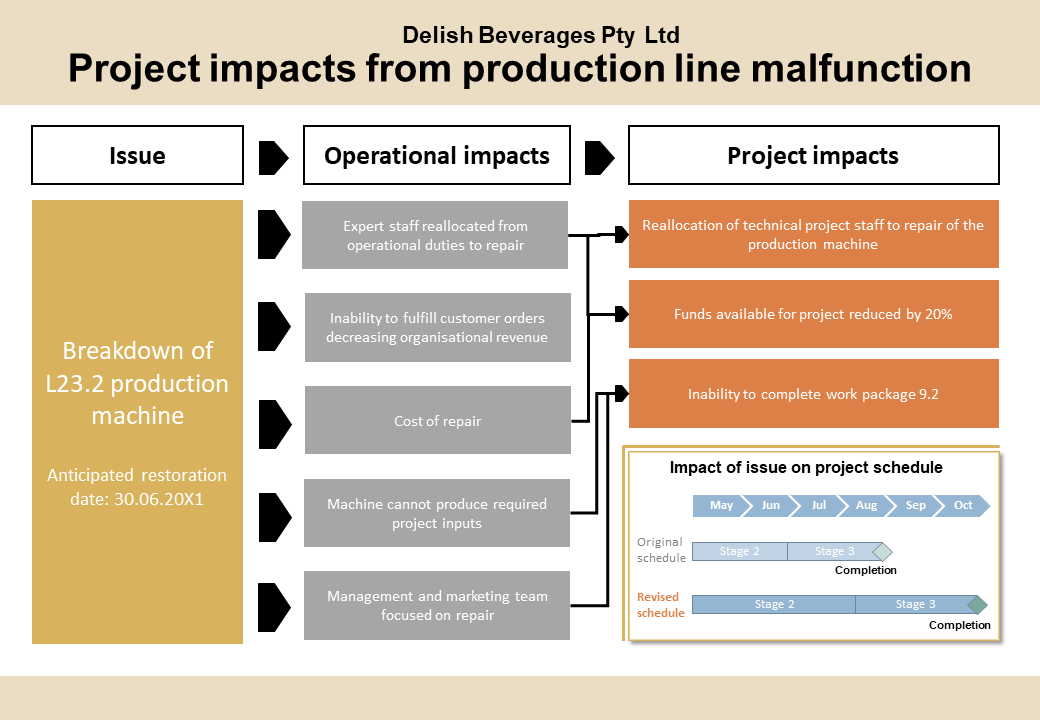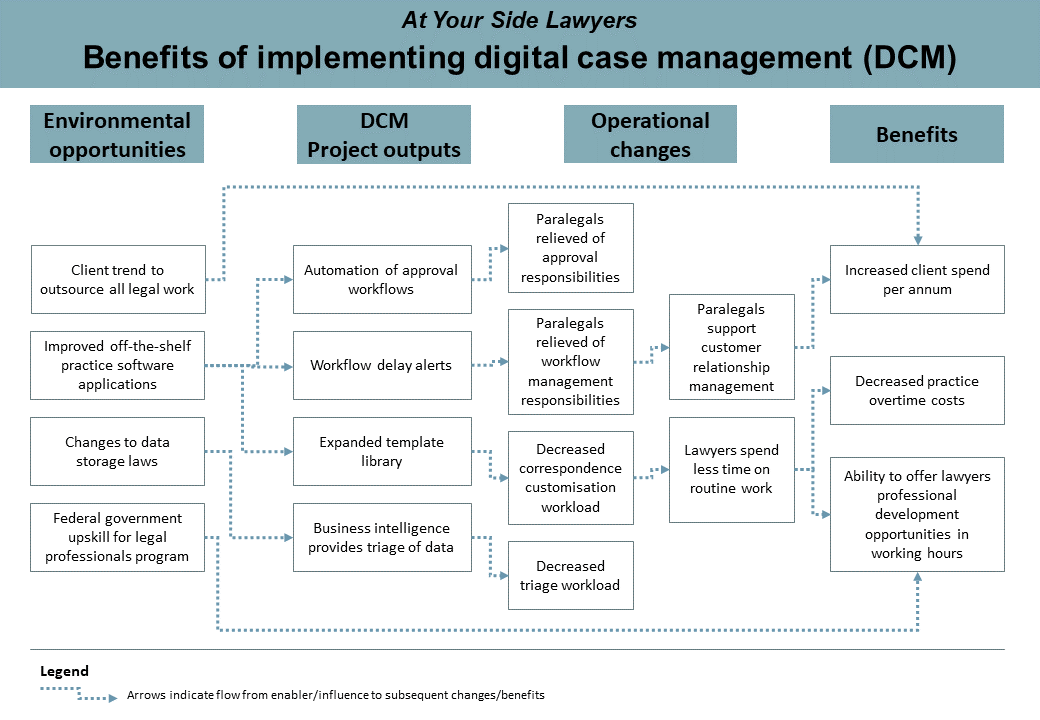Archetype 7: Anticipated outcomes or benefits
This archetype is used to communicate the outcome of something that has happened or may happen. The editable PowerPoint files for the examples of this archetype are provided at the end of this chapter for you to use and adapt, along with annotated versions of the archetypes to show the key elements in their design.
Example A: Anticipated outcomes or benefits

Example B: Anticipated outcomes or benefits

Guidelines for tailoring the archetype
| Archetype | Anticipated outcomes or benefits |
|---|---|
| Purpose | This visual archetype is used to communicate the outcome of something that has happened or may happen. This may include: • the deliverables/outcomes/benefits of an initiative • the deliverables/outcomes/benefits of taking a particular course of action • problems that are occurring as a result of an initiative/activity/risk/issue This archetype is based on a benefits dependency map. |
| Information you will need | • The initiative/event that is triggering some outcomes/impacts • The outcomes/impacts that have/are/will occur • There may be multiple layers (hierarchy) of outcomes/impacts that you want to communicate • If you do have multiple layers (hierarchy) you will need to know how they relate/link |
| Tips | • If you are using multiple layers of outcomes/impacts, consider the sequence in which they occur (inform/influence one another) • You may use this visual archetype with other visual archetypes to create a single page visual (i.e. it may be used in combination with other visual archetypes) |
| Page layout | • Either landscape or portrait may be possible depending on the number of drivers/influences/factors and any layers and whether you are coupling this archetype with other archetypes on a single page • The initiative/event is on the far left • Outcomes/impacts are to the right of the initiative/event |
| Text | • Any layers of outcomes/impacts will require a heading for the group of each outcomes/impacts • Each outcome/impact and initiative/event will require a label |
| Imagery | • Represent each outcome/impact and initiative/event as a rectangle (or other shape) • Use arrows to indicate the links between layers in your diagram |
| Colour | Consider using colour to indicate favourable (green) versus unfavourable (red or orange) elements in the drawing. For example: • green rectangles for benefits that might arise from an initiative • red rectangles for adverse impacts that may have arisen from an issue |
| Legend | • A legend is not likely to be required for this visual archetype unless abbreviations are being used in the labels or stakeholders are unfamiliar with this style of diagram |
| Notes | • Consider using another visual archetype/s or chart/s to explain the outcomes/impacts listed in your diagram |
Example A: Anticipated outcomes or benefits (with annotations)
Click the blue information buttons on the diagram below to see annotations explaining the reasons for choosing these visual elements.
Example B: Anticipated outcomes or benefits (with annotations)
Click the blue information buttons on the diagram below to see annotations explaining the reasons for choosing these visual elements.
'Anticipated outcomes or benefits' templates
The templates shown above are freely available for you to use and adapt. You can download them using the links below:

